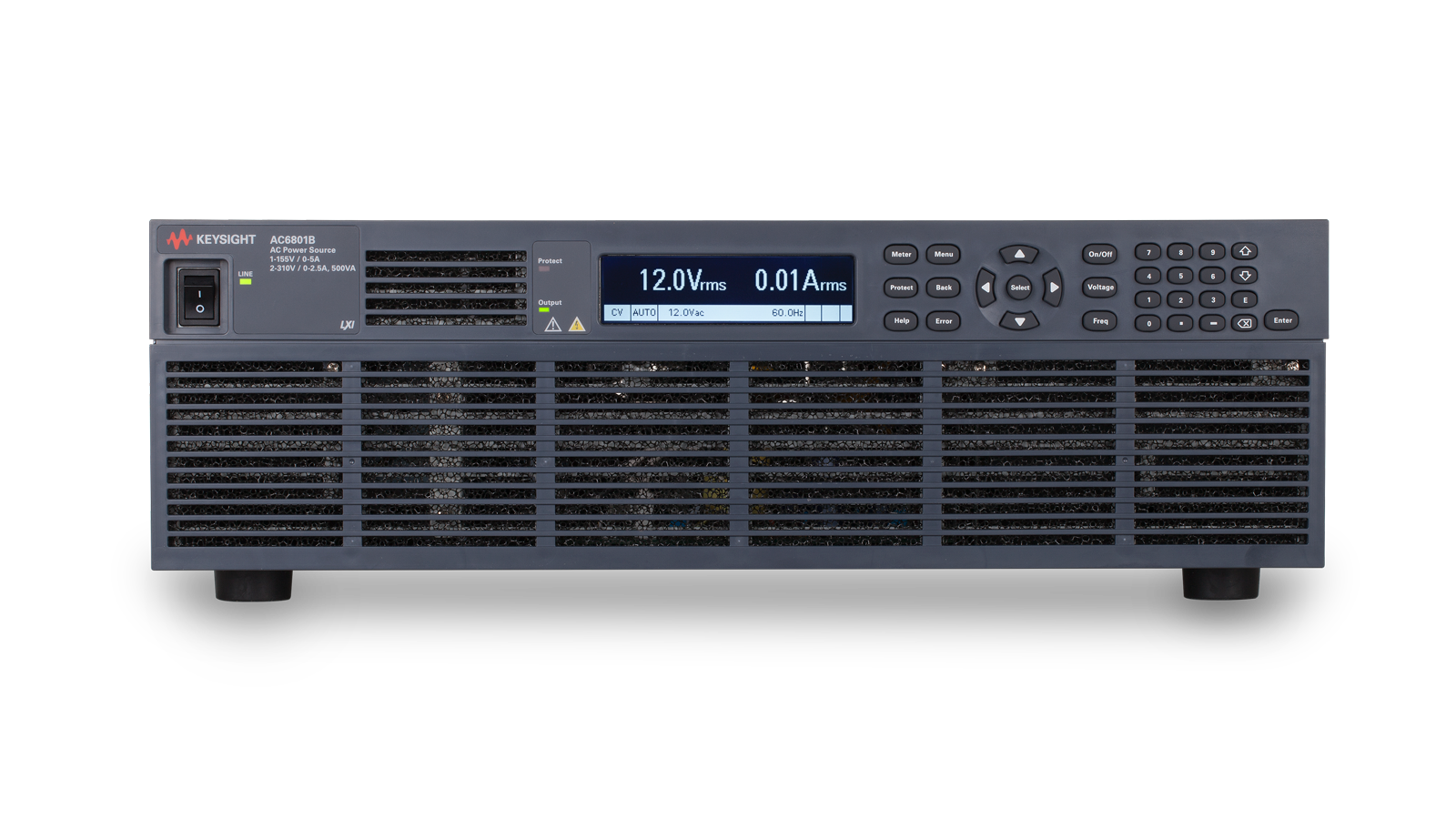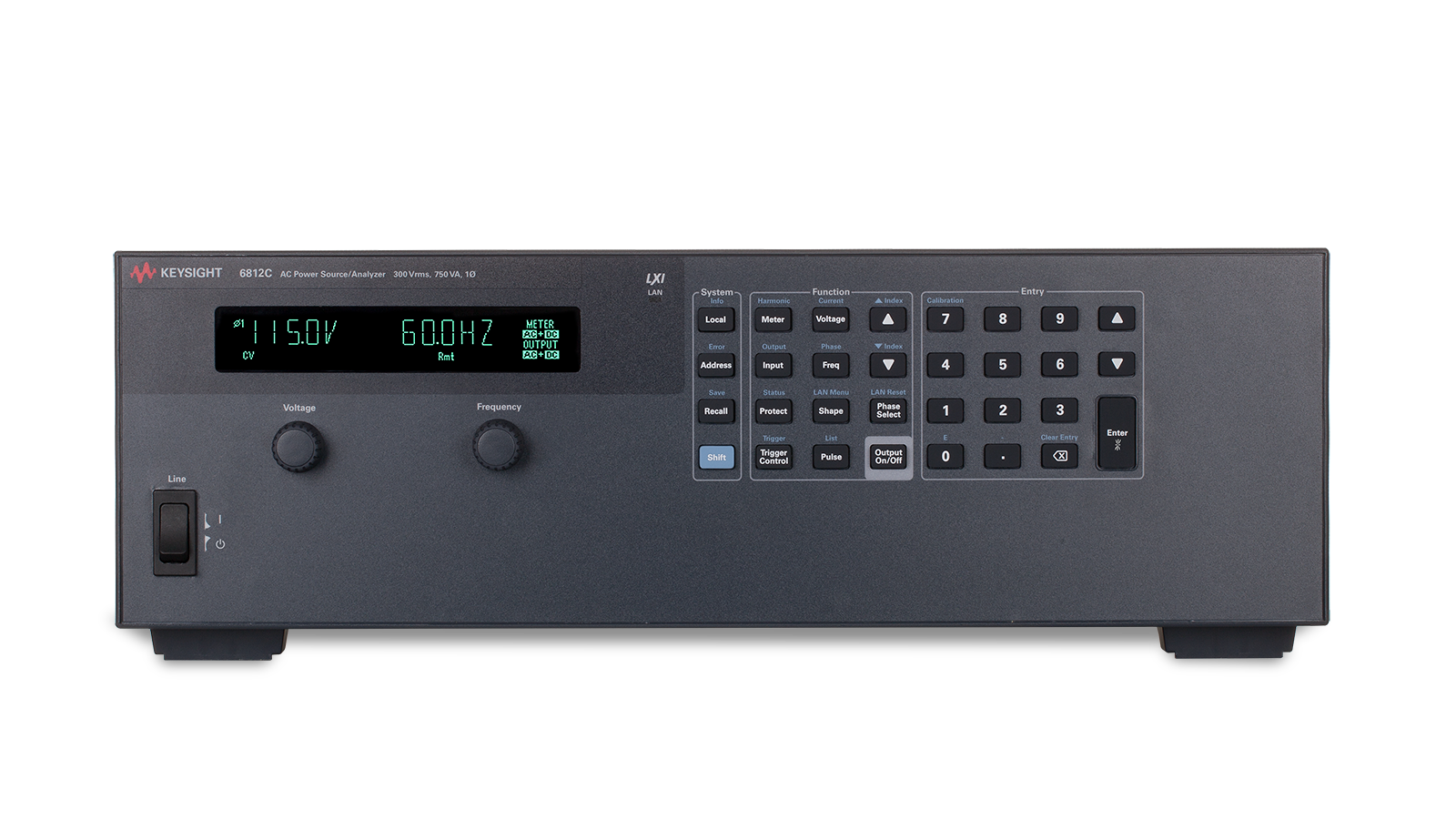What are you looking for?
AC Power Sources
Maximize your uptime with Keysight AC power supplies

How to analyze current and voltage of AC motor using an AC power source and power analyzer
Solve your AC power test challenges
Keysight provides single-phase and three-phase AC power supplies to help you test a variety of AC-powered devices. Using Keysight AC power supplies will lower the cost of ownership with global support and the longest standard warranty in the industry.
- Use the Keysight AC6800B basic single-phase AC power supply series to confidently test AC power using a stable and highly reliable AC power supply.
- The single-phase Keysight 6800 Series Performance AC power supply series simulates and analyzes high-performance AC environments with built-in measurement capabilities. In addition, the 6800 series provides an arbitrary waveform output for creating non-ideal power signals.
- The three-phase Keysight AC6900 AC power supply provides a complete AC and DC power solution by combining the capabilities of a multimeter, harmonic analyzer, and power analyzer in one instrument.
The Power Handbook
The Power Handbook serves as a complete source of information on power-related topics, including information from Keysight’s popular application notes. You will gain insight into the fundamentals of electrical power (AC and DC Power) and DC power supplies, including defining the different types of power supplies. You will also learn about the key characteristics of power supplies and electronic loads.
The handbook provides chapters on how to test battery performance, power converters (DC-DC, AC-AC, and AC-DC), and solar arrays. It also includes a chapter on using software to control power supplies, automate tests, and analyze data.

Find the AC Power Supply That's Right for You
Extend Your Capabilities With The Right Tools
Technology is constantly changing. So too are the requirements engineers face. Get more functionality out of your existing hardware today by complementing it with the right accessories to improve productivity and the right Keysight PathWave design and test automation software to accelerate your product development.
Featured Resources
AC Power Source FAQ
What is AC?
An alternating current (AC) is an electric current that periodically reverses polarity and continuously varies its magnitude over time. Businesses and residences use AC power because it is less costly and more efficient for generating and transmitting than direct current (DC) power. Transformers can step up the voltage of an AC line or step it down to reduce power losses during transmission.
AC power is the kind of electrical energy residential homes receive — consumers use AC power when they plug TVs, appliances, and other devices into the wall. AC power is then converted to DC power which nearly all electronic devices use.
What is an AC Power Source?
An AC power source supplies AC power to a load. The power input can be either AC or DC. You need AC power sources because power supplies from wall outlets do not meet the load’s specifications. For the load to function correctly, an AC power supply transforms and tunes AC power from the electrical source to the voltage, current, and frequency levels the device requires. This is achieved by stepping up or down the voltages, and then filtering the signal.
You can use an AC power source for testing purposes. An AC power source can simulate electrical grid interruptions, harmonics, surges, or other events that could cause a device under test (DUT) to fail.
What is the difference between a DC and AC power source?
AC power delivers electricity over distances and distributes it via electrical grid systems.
DC power provides a one-directional flow of electric charge, and while it is a more reliable form of electricity, it sacrifices distance. Most electronic devices use DC power because the voltage levels are so consistent — for example, devices that use batteries. Or, devices convert AC power to DC power using a rectifier. Power supplies often have built-in rectifiers and transformers to increase or decrease the voltage to the right level.
How can I control an AC power source remotely?
Keysight AC power sources can be controlled remotely via standard communication interfaces such as GPIB, LAN, USB, or RS-232. They can also be integrated into automated test systems using SCPI commands or through driver support in various software platforms.
How do I choose the right AC power supply for my application?
The choice of an AC power source depends on several factors including the power requirements (voltage, current, and power), the frequency range, waveform requirements, and any specific features like harmonic generation or measurement capabilities.
How can I control an AC power source remotely?
Keysight AC power sources can be controlled remotely via standard communication interfaces such as GPIB, LAN, USB, or RS-232. They can also be integrated into automated test systems using SCPI commands or through driver support in various software platforms.
Want help or have questions?










